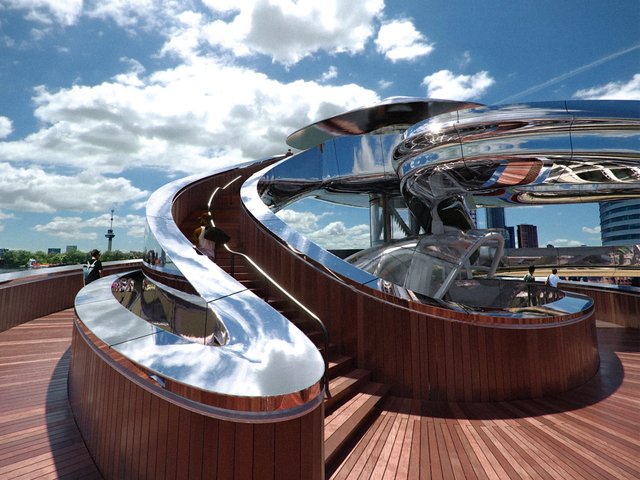On a windswept Amsterdam quayside, a series of vast former factory halls is undergoing transformation into a museum that the developers hope will signpost a new way for art to address the environment and climate change.
For now, these 19th-century structures—the Van Gendt Hallen in the east of the city, once used to produce railway materials and later diesel engines for ships—are a building site. But in the summer of 2025, they are scheduled to open as the Drift Museum to show the work of Studio Drift, the Dutch art duo Lonneke Gordijn and Ralph Nauta.
The 8,000 sq. m museum—housed in two of the five enormous halls, the highest of which rises to 14.5 metres—is designed by the architect Javier Zubira of zU studio. Its designers hope that it will be energy-positive, adding overall to resources rather than depleting them.
Though the building is heritage-listed, ingenious ways have been found to conserve energy: lightweight roof insulation, a DC energy network that reduces energy use by almost a third, a heating system that stores summer warmth for winter use and, of course, solar panels.
All this is described in detail by the building’s owner, Eduard Zanen, whose fortune sprang from the invention of a baby buggy: his company, Bugaboo, was founded in 1999. After he sold his part in the business, the planned sale of the Van Gendt Hallen came to his notice. Another potential buyer was Studio Drift; they lost out to Zanen, but after the huge success of Studio Drift’s 2018 exhibition at the Stedelijk Museum, the three reconnected and a new partnership was born.
Zanen says he and Studio Drift are “very like-minded … I saw an opportunity to work together”. His main ambition, he says, is to leave the world a better place, and in Studio Drift, he sees people who can help him achieve that. “The only way to improve the world is to have people who create and push innovation to the next level,” he says. “You have to be curious about technology.”
Studio Drift says its mission is to use technology to manifest the hidden properties of nature to learn more about Earth’s underlying mechanisms, and to re-establish the connections between human beings and nature. Best known for Drifter, a 2017 work that confounds expectations of weight and weightlessness by seemingly floating a heavy concrete block in mid air, Studio Drift says its exhibits in the new museum will reflect the vast industrial interior of its building.
“All the artworks will be mechanical, moving, theatrical,” Gordijn says. “We want to reveal layers … and let people use their intuition and get them to understand on a deeper level who they are and what they’re doing on a daily basis.” Making connections with nature for the future is, she says, “no longer a choice … [as artists] we have to address these issues”.
Zanen says that despite the difficulties posed by such an old and historic building, he is determined to realise his energy-neutral dream. The solutions to some of the issues he faces will still be being worked on when the building opens.
Visitors will be transported from central Amsterdam by electric boat, and the experience that awaits them at the museum will, Gordijn says, reflect the building’s heritage: this is a museum whose space is as much a part of the design as its objects. While the museum will initially show only Studio Drift works, the founders plan to invite work from other artists at a later stage.
The restaurant, in a third hall, will be largely vegetarian, with many ingredients grown in an on-site vertical garden. As well as the museum, the Van Gendt Hallen will house a range of start-ups united with Studio Drift in their focus on a better alignment with the environment.





